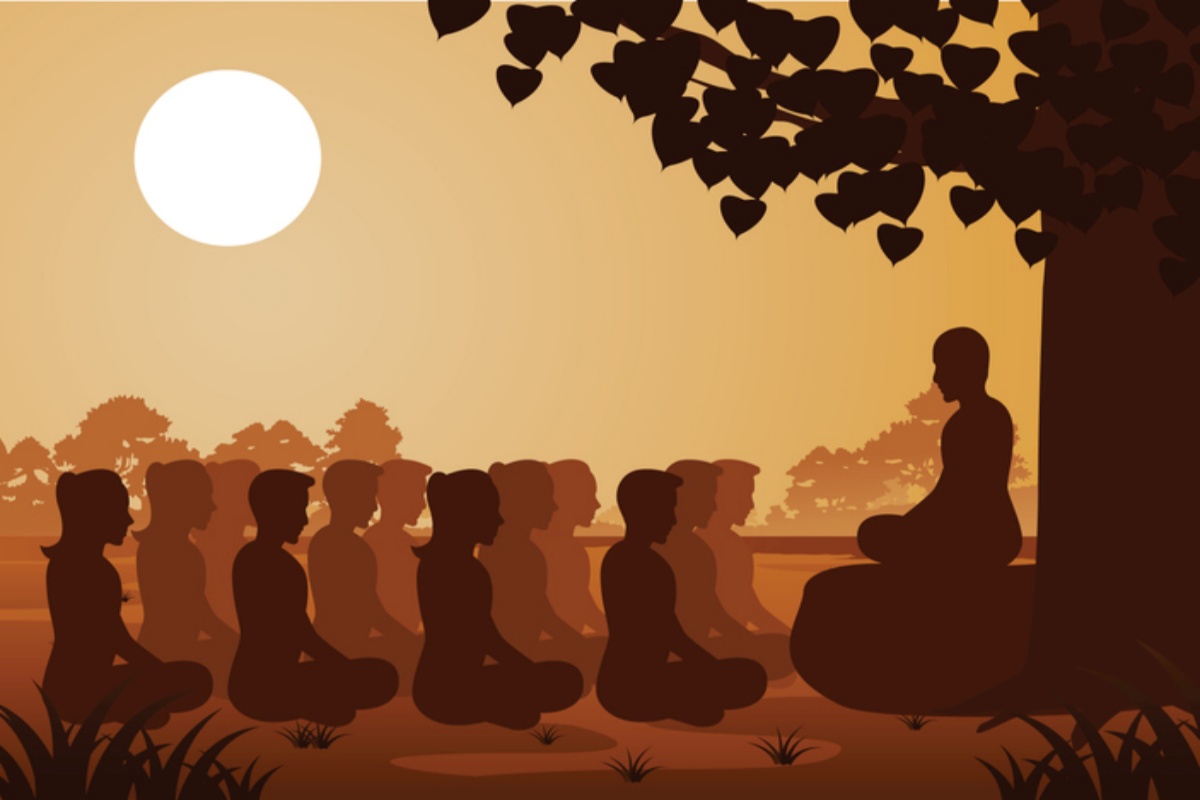UP offers online Sanskrit classes for foreign students
A dedicated helpline through WhatsApp number is being set up to enable foreign students who can learn Sanskrit verses and rituals etc.
Let us understand Idealism deeper to relate it with Advaita.

Study finds people practice mindfulness incorrectly (Picture: iStock)
Upanishads is not at all an outdated collection of inconceivable Sanskrit shlokas but knowledge provided in the scripture can easily be applied our life even in the current times.The Upanishads are ancient Indian philosophical texts, composed by various Gurus over a large period. There are over 200 known Upanishads, however, 18 of them are considered the principal Upanishads. The word Upanishad is made up of two terms which are “upa” (near) and “shad” (to sit) meaning to “sit down near an enlightened master.” This signifies the action of sitting at the feet of an enlightened Guru for spiritual instructions and discussions.
Written in the Sanskrit language, the Upanishads largely contain spiritual discussions and commentaries of enlightened teachers. They constitute the last section of the Vedas. These texts are in no way limited to a certain religion or caste, but largely adapted from the Hindu culture. They also resonate with various Greek philosophers and Western literature.
Advertisement
Brahman, the ultimate reality, is the unborn, unchanging truth. It contains everything in this universe and beyond. Atman is the essence of self, the soul. It is the indestructible identity beyond the body and its senses. It is the un-affected, immortal life force.
Advertisement
The word Advaita is made up of two terms such as “a” (not) and “dvaita” (duality) and signifies that no duality exists. Everything comes from Brahman itself. The principle of Upanishads is to realize that the self (atman) is no different from the Brahman and everything around it is just a manifestation of Brahman itself.
“I am other than name, form, and action.
My nature is ever free!
I am Self, the supreme unconditioned Brahman.
I am pure Awareness, always non-dual.” — Adi Shankaracharya
In the Katha Upanishad, Yama, the lord of death, teaches Nachiketa the concept of the atman.
To attain a tranquil state of life and transcend death you need to realize the atman. Lord Yama says that the atman is the master of the chariot which is the body. It is present in all living beings and is eternal.
The Atman is devoid of sound, touch, taste or smell, and never decays. It is only when you realize that you can transcend death.
The Mandukya Upanishad explains the concept of Brahman or the Absolute and the sacred word Om, which also represents Brahman.
It further states that everything is Brahman, including the Atman or Self. It also mentions that just like the objects in a dream are unreal, so are the objects in the waking state too. It is because the atman imagines these objects through its maya.
Hence, the highest truth is the total unreality of the world. The Adhyatma Upanishad puts forth that Brahman is beyond any conception of beginning and end, actions and all worldly forces. It further says that one should perpetually focus on Brahman and meditate on the true Self within one’s self.
Therefore, one should not be attached to the world or identify with the body or the senses.
Quantum Physics is based on the concept of Idealism. Let’s try to understand realism and idealism. Realism is when you believe that the existence of material objects does not depend on you perceiving them, for example, a book always remains a book, irrespective of whether you see it or not. Idealism is when the existence of a material depends on you perceiving it, for example, if a cat is kept in a box along with a chemical apparatus that has a 50% chance of releasing poisonous gas.
The result is completely random and somehow depends on the observer opening the box. This is the famous Schrodinger’s cat theoretical experiment; another famous experiment is Young’s Double-slit experiment, where an electron changes its preference between two slits depending on whether it is being observed or not.
Let us understand Idealism deeper to relate it with Advaita. Consider a book, what is a book really? Isn’t it just a bundle of sensations? These sensations are recorded by our 5 sensory organs and processed by the brain taking into account past experiences and thus perceived as a book.
You must understand that the human senses are limited in many ways. Our eyes can only see the matter that emits a wavelength of range 380-700 nanometers of the infinite possibilities, we can only hear sounds of frequency 20Hz to 20KHz.
I have demonstrated the dependence of so-called matter on the mind. You must have noticed the common underlying statement that everything around is just a manifestation of the unchanging Brahman, it just depends on how we perceive it.
The best way to implement the knowledge of Upanishads into your daily life would be by adopting a positive mindset. You must realize the unity of Atman and Brahman present within yourself, this can be achieved by meditating frequently. This meditation should be carried out to achieve a state called ‘thoughtless awareness’.
This state is essentially referred to as perceiving and experiencing the “inner self”, where you are free of all thoughts and bondage.
Once this self-realization has been attained, you must try to realize this unity within others too. You will realize that you are no different from everyone and everything around you. This will help you eliminate all ego and treat everyone with respect and kindness.
Another implementation is that you can drastically reduce mental stress, which is only caused by your thoughts. You will attain peace of mind and will be able to solve all your problems with calmness and compassion.
Advertisement